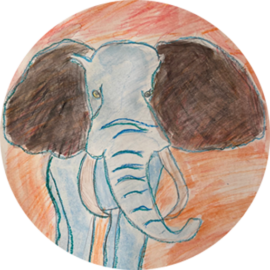Making Sense of the World : the Entangled Perspectives of Camilla Pang and Julia Ravanis
Here are two of the best science books I’ve read in a while: Explaining Humans by Camilla Pang, and Skönheten i Kaos by Julia Ravanis. Reading them back to back I came away with an impression of perfect symmetry.
Just like it’s impossible to measure both the position and speed of a quantum particle, it’s hard to fully assimilate the perspectives of these two books. The writers seem intimately entangled, yet their points of view couldn’t be more different.
While Pang uses science to make sense of a world made alien by her Asperger’s perspective, Ravanis turns to the humanities to rekindle her love for physics—a field that has become increasingly unrelatable as she ventures deeper into the dark heart of quantum mechanics.
Both writers are under 30 and share an exceptional literary style, along with a wide-eyed fascination for the wonders of elegant equations and irrational human passions. Their infectious enthusiasm is hard to resist.
I won’t try to quote from Ravanis’ book, since I’d had to mangle her beautiful language, but I will try to summarise one of the thoughts that I found to have the most profound meaning. It’s where she’s taking a close look at the metaphors we use to make sense of the world.
Her point is this: Metaphors are so often visual in nature, that we tend to equate understanding something with the ability to visualise it. Which explain why Einstein–always a visual thinkers–hated quantum mechanics. Because while the standard model helps making perfect mathematical sense of particle physics, it’s simply not possible to visualise what it proves to be true.
But here’s the thing: metaphors don’t have to be visual in nature, and in fact going beyond the visual often allows us to naturally accommodate ambiguity. Trompe l’oeil images are just as maddening and hard to let go of as trying to visualise a quark that exists simultaneously in multiple places, but anyone can attest to feelings of ‘being torn‘ or ‘in two minds‘.
Time is another metaphor that is notoriously hard to visualise, which hasn’t stopped anyone from experiencing it. Again it’s also a phenomenon that most of us feel behave in a highly irrational manner; slowing to a creep in one moment only to jump into action the next.
The point that Julia Ravanis makes, the perspective she helps me see, is that quantum mechanics doesn’st have to ‘not make sense’. That the act of sense-making includes a chosen perspective, and that being mindful that there are more than one possible, even within science, means that the boundaries between it and the humanities are crumbling.
Camilla Pang provides equally refreshing perspectives on the power of metaphors. Her bagful of letter-combination diagnosis means she frequently suffers from panic attacks. But her artist mother helps her cope by teaching her to think of fear as white light, which can be slowed down by a prism, exposing its component parts—each of which can be dealt with in isolation:
Denial is worse than fear: a sort of mental constipation that traps you and eventually makes you hate yourself for being so safe. Being opaque in this way is no more sustainable than trying to hold your breath for ever: eventually your spirit will suffocate. It’s better to risk feeling afraid than feel nothing at all – to make yourself transparent enough for the light to shine through.
[…]
I think about making myself into the densest possible prism, bringing together all my experiences of a particular event or fear in one place. This gives me the processing power and mental density to reduce the speed the fear is travelling at – just like light through glass – minimising the chance of being overwhelmed. I’m then back in control, able to study the new threads of colour and detail that have been opened up.
[…]
These techniques allow me to function without being overwhelmed by fear, but that’s not all. I also find something inspirational about looking into the white light of my fears. It’s the same impulse that has always drawn humanity towards fire – a source of huge danger that also powered human evolution – and which explains why children will always try to look directly at the sun.
[…]
Fear isn’t something we need to ‘shine a light on’. It is the light, one we can all learn better how to live with, and even benefit from.
